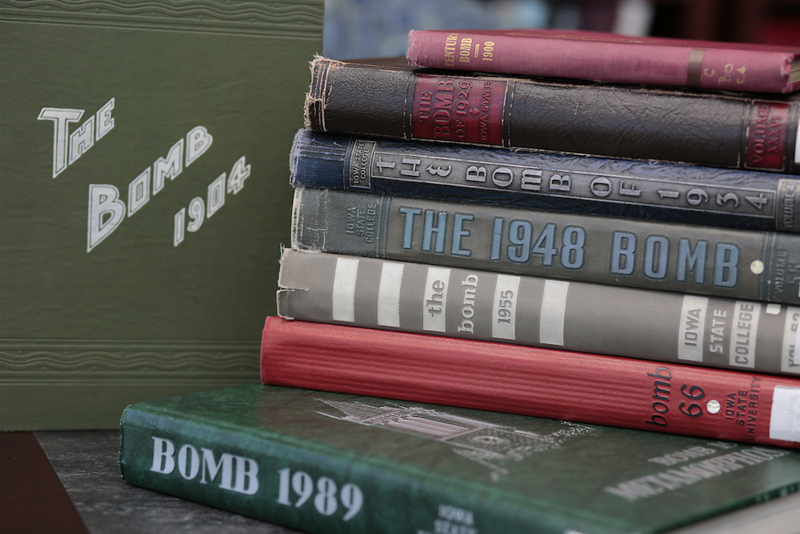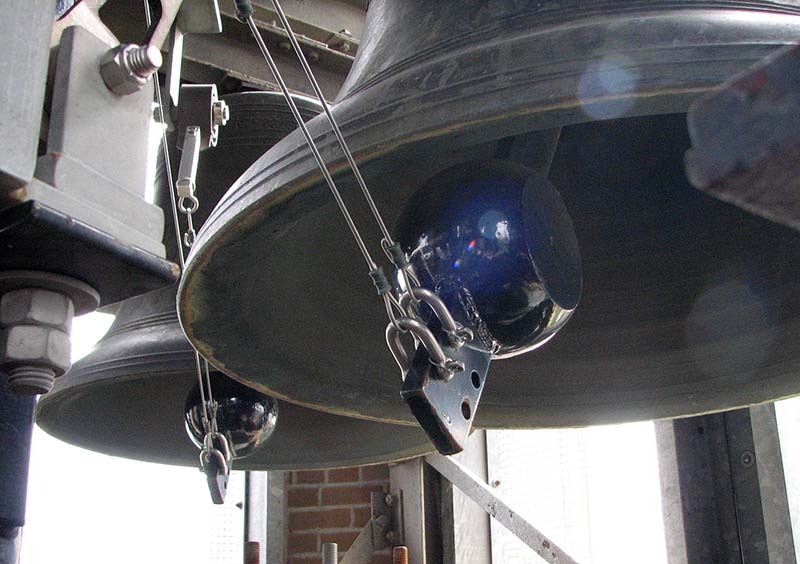
Original hardcover copies of the "Bomb." Photo by Christopher Gannon.
Calling all Iowa State history buffs. University Library needs help transcribing 100 years and almost 50,000 pages of a digitized version of the university's yearbook, the "Bomb."
Planned events
University Library is planning several events to help spread the word about "Transcribe the 'Bomb.'" More may be scheduled in the future.
- Hands-on demonstration, April 25 (9-11 a.m., come-and-go, Parks Library lobby). Learn how to access the project and transcribe pages.
- Transcribe-a-thon, Oct. 25 (noon- 4 p.m., Parks Library). Details still are being worked out, but expect a speaker, snacks and prizes. An in-person and virtual event may take place simultaneously.
- Transcribing stations, Oct. 27 (1-4 p.m., Parks Library, Special Collections). The stations will be part of the 2017 homecoming festivities.
A six-year effort to digitize the entire "Bomb" collection (1894 to 1994, minus 1902) concluded in 2016. Unfortunately, the digital versions are difficult to search, primarily because the software used to transcribe the yearbooks' pages into digital and searchable text had problems recognizing pre-1920s fonts. For example, a capital O is often seen as @, and a capital C is usually, but not always, listed as <t. Hand-drawn graphics, unique layouts and lists of students' names also posed issues for the transcription software. In addition to search difficulties, the digitized version's quirky typos and incomplete information hinder people who require accessible computing for visual, auditory, physical or other kinds of disabilities. But in the end, library staff still are pleased with the outcome.
"The 'Bomb' is a such a good record of university and Ames history, so while the transcription process had some problems, it was a worthwhile effort," said Kim Anderson, digital initiatives archivist.
The library staff confronted the transcription challenges by creating its inaugural "Unsolved Histories" project, called "Transcribe the 'Bomb.'" The project allows anyone with computer access -- Iowa State fans, alums, employees or people with no ISU affiliation at all -- an opportunity to transcribe as few or as many pages as they desire.
Get started
To get involved with the project, go to the "Transcribe the 'Bomb'" website and click on the "Start" button at the bottom of the page. From there, transcribers must decide if they want to be registered or anonymous users. The difference? Registered users will be recognized for their work (i.e., how many pages they transcribe) and anonymous users will not. ISU employees who wish to participate in this project should not register with their university email address, for security purposes. Instead, individuals may use their personal email or create a new email account for the project.
Once in the system, users choose a yearbook and the software automatically picks the pages from the book chosen. There is a skip button if the page selected is unsatisfactory to the transcriber -- too much text and too little time, for example.
Instructions on how to transcribe each page, including how to treat graphics, images and photo captions, are available once the user selects a page; a tutorial also is online. When they are finished, users submit their work and may continue to transcribe more pages or quit. Each page must be transcribed five times by five different users before it's considered complete.
"By that time, we figure that if the transcriptions are pretty consistent, everyone probably typed everything correctly," Anderson said.
So far, 83 registered users and about 40 anonymous individuals have participated in the project. Anderson said the average amount of time spent on each page is about 11 minutes.
"Interestingly, it seems most people work on pages rather late at night or early in the morning," she said.
The more, the merrier
Anderson hopes "Transcribe the "Bomb'" captures peoples' attention, not only because it's a project that likely will take several years to complete with the help of many nimble hands, but also because it's a unique opportunity.
"There are issues that need to be solved with the digitized 'Bomb,' like the search functions and adaptive technology. But opening this project up to anyone helps people engage in the history of the university on a personal level," Anderson said. "It's mutually beneficial."

